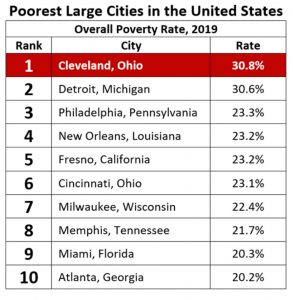CLEVELAND — The number of Americans who overdosed and died increased from 71,000 in 2019 to 92,000 in 2020, according to the Centers for Disease Control and Prevention. That 21,000 increase is the largest single-year increase since 1999.
Senate Bill 30 was signed by Gov. Mike DeWine earlier this year to designate Aug. 31 as Ohio Overdose Awareness Day.
Dr. Christina Delos-Reyes, program director of Addiction Psychiatry, said a day of recognition is a step in the right direction to end the stigma around Opioid Use Disorder.
“There’s a saying that addiction and other mental illnesses and other things like suicide are very highly stigmatized and they’re not necessarily what’s called a casserole illness, right,” said Delos-Reyes. “So, if you have another kind of disease, if you have breast cancer if you’ve had a heart attack, people will come to your door and bring you a casserole. Addiction, mental illness, suicide — those are not casserole illnesses and so having a recognition day helps to bring us one step closer to a day hopefully where it will be an illness where we can go to our neighbor and we can go to our family member and say, ‘I’m really sorry that you lost somebody to this disease.’”
Delos-Reyes works with organizations like Project ECHO, which focuses on training caregivers and prescribers.
“Prescribe medications such as buprenorphine, methadone, and naltrexone — these are actual medications that treat the disease of addiction,” Delos-Reyes said. “So whereas Narcan is something that prevents a person from dying from an overdose, the other medications are things that actually treat the disease, so that the person no longer has to use opioids, on a daily, day-to-day basis.”
She said she wants to emphasize Project DAWN, which stands for Deaths Avoided With Naloxone, also known as Narcan. The program distributes nasal spray Narcan kits free of charge.
Delos-Reyes said she hopes recognition like Ohio Overdose Awareness Day helps people better understand addiction.
“Addiction is a brain disease and like other medical illnesses, diabetes, cancer, high blood pressure. Addiction has its effects on people, and as a result of those effects, they have what’s sometimes seen as negative behavior,” Delos-Reyes said. “So if we can basically separate the person from the behavior and realize that the behavior is part of a treatable disease, then that helps to lessen the stigma that’s associated with a disease of addiction.”
Ohio recorded 12,195 overdose deaths between Jan. 1, 2018, through Oct. 10, 2020. Of those deaths, most occurred in the youngest age group of 24 years old or younger, according to research published in JAMA Network.
In Ohio, drug overdose deaths involving opioids dropped from 4,293 in 2017 to 3,237 in 2018, according to the CDC. In 2019, 4,028 people died of unintentional drug overdoses — a 7% increase from 2018, according to the Ohio Department of Health.
If you need help, you can find a facility near you through ODH’s website.
Other Resources
Ohio Department of Mental Health & Addiction Services
- (614) 466-2596
- Open 8 a.m. to 5 p.m. on weekdays
SAMHSA’s National Helpline
- 1-800-662-HELP (4357)
- Open 24/7, 365 days a year




